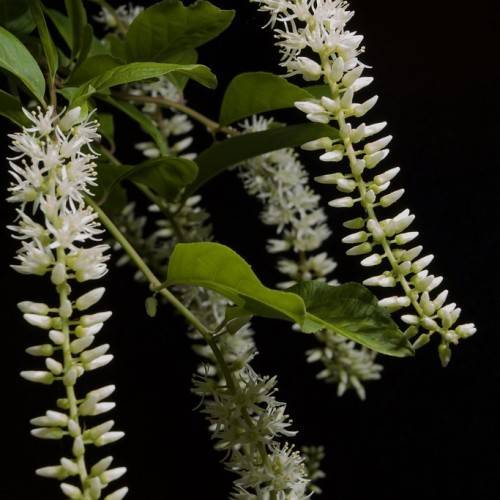
Virginia sweetspire
Itea virginica 'Sarah Eve'
Cycle:
Perennial
Watering:
Frequent
Hardiness Zone:
5 - 9
Flowers:
Flowers
Sun:
Full sun,part shade
Fruits:
Fruits Ready In Fall
Edible:
Yes
Leaf:
Yes
Growth Rate:
Low
Maintenance:
Low
Drought Tolerant:
Yes
Salt Tolerant:
Yes
Care Level:
Moderate
watering
Virginia sweetspire (Itea virginica 'Sarah Eve') is a deciduous shrub that thrives in a sunny, well-drained bed. The best way to water this plant is to give it a deep, infrequent soaking. During the growing season, the Virginia sweetspire should receive 1 to 2 inches of water per week. Make sure the soil is evenly moist and allow the top couple of inches to dry out in between waterings. During the winter, reduce watering since the plant is dormant and the soil will take longer to dry out. It is also important to mulch around the base of the plant to help conserve soil moisture.
sunlight
Virginia sweetspire (Itea virginica 'Sarah Eve') is a deciduous shrub native to the southeastern United States. It thrives best in full sun and partial shade and can tolerate light shade. When planting Virginia sweetspire, it is ideal to place it in a site with morning sun and afternoon shade. It should receive at least 6-8 hours of direct sunlight per day and can tolerate slightly more or less. However, too much direct sun can cause burning, leading to leaf damage and decline in growth. When selecting a site for this shrub, it is important to avoid areas of the yard that experience strong winds, which can cause further leaf burning and damage.
pruning
Virginia sweetspire (Itea virginaica 'Sarah Eve') should be pruned in early spring as new growth begins, taking care to avoid removing flower buds. If pruning for the purposes of controlling size, prune only 1-third of the new growth. If pruning for shape or if the plant is overcrowded, prune all of the new growth at the desired height, taking care to keep an even shape. By pruning in this way, you can be sure to keep blooms consistent from year to year. Take care to avoid pruning after mid-summer, as this may impede blooms for the next season.
